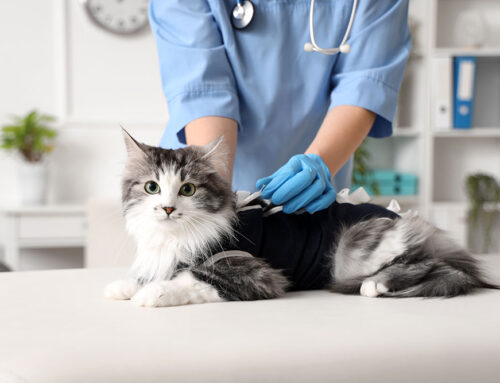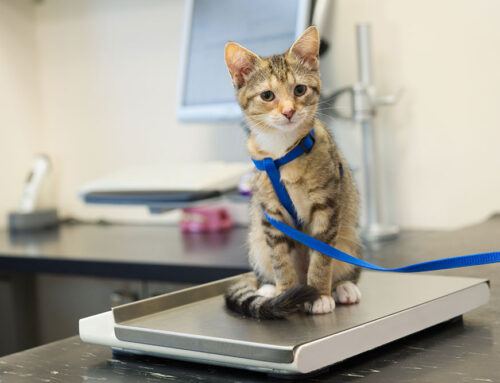Pain Unmasked: A Vet’s Guide to Finding and Easing Your Pet’s Discomfort
As pet owners, one of the hardest things we face is knowing when our animal is in pain- especially when they can’t tell us what hurts. At Arcata Animal Hospital in Arcata, CA, we understand the emotional weight of watching your pet struggle and not knowing exactly what’s wrong. This guide is designed to help you recognize signs of pain, understand what’s happening beneath the surface, and know how we can work together to restore your pet’s comfort and quality of life.
Understanding Pain in Pets
Pain in pets isn’t always easy to spot. They’re hardwired to hide signs of weakness, a trait inherited from their wild ancestors. But just because they aren’t limping or crying out doesn’t mean they’re not hurting.
There are two broad categories of pain:
- Acute pain: sudden and often linked to injury, surgery, or trauma.
- Chronic pain: persistent discomfort caused by ongoing issues like arthritis, cancer, or neurological conditions.
Understanding these categories helps us tailor the right treatment- and helps you notice when something’s off.
Why Early Recognition Matters
Ignoring pain doesn’t just cause discomfort- it can impact every aspect of your pet’s health. When left untreated, pain can:
- Worsen underlying medical conditions
- Lead to depression, anxiety, or aggression
- Disrupt eating, sleeping, and social behaviors
- Diminish overall quality of life
Pain isn’t just a symptom- it’s a condition in its own right that deserves attention and care.
Visit AAHA’s “Mobility Matters” guide for understanding the importance of pain and mobility concerns.
Spotting the Signs: What to Watch For
Pain doesn’t always show up in obvious ways. Keep an eye out for these behavioral and physical changes:
Behavioral Clues
- Less enthusiasm for walks, playtime, or meals
- Avoiding affection or becoming clingy and anxious
- Restlessness or changes in sleeping patterns
- Hiding, especially in cats, or acting withdrawn
Physical Indicators
- Limping or favoring one leg
- Stiffness, especially after waking up or lying down
- Vocalizing- whining, growling, or yowling during movement
- Changes in posture like hunching or guarding a body part
- Loss of appetite or difficulty chewing food
Visit AKC’s guide to learn more about the causes of limping, and read
What’s Wrong? Common Pet Pain Signs from AAHA to get a deeper review.
Unique Signs in Cats
Cats are notorious for hiding pain. In addition to the signs above, watch for:
- Changes in grooming habits
- Inappropriate urination or defecation
- Avoiding jumping or climbing
- Sudden aggression or withdrawal
These subtle shifts can be the only hint that your cat is uncomfortable.
What Happens if Pain Is Left Untreated?
When pain lingers, the consequences go beyond discomfort:
- Muscles can weaken due to disuse
- Joints may deteriorate further
- Chronic pain can lead to behavior problems
- Pets may lose interest in their surroundings, becoming depressed or anxious
Pain that’s not managed becomes its own health issue. Acting early can prevent a cascade of complications.
How We Diagnose Pain at Arcata Animal Hospital
When you bring your pet in, our veterinary team takes a full-body approach to uncover the source of discomfort:
- Comprehensive physical exam
- Observation of movement and posture
- Diagnostic imaging: X-rays, blood work, or referral for advanced imaging like CT or MRI if needed
- Discussion of behavior changes you’ve observed at home
This thorough process helps us create a treatment plan that targets both the cause and the symptoms.
Treatment Options: Managing Pain Effectively
No two pets- or pain conditions- are exactly alike. That’s why we offer a variety of evidence-based treatments tailored to your pet’s needs.
Medical Treatments
- Prescription medications: NSAIDs and other pet-safe pain relievers
- Never give human medication to your pet- some common painkillers can be toxic. For details, see the FDA’s pain reliever guide.
Physical Rehabilitation
- Hydrotherapy, massage, and laser therapy can reduce pain and increase mobility. Learn more about laser therapy at Arcata.
Integrative Therapies
- Acupuncture, supplements, and chiropractic care can be used alongside conventional medicine.
Surgical Options
- In some cases, surgery is the best way to correct a structural issue causing chronic pain.
Everyday Life with a Pet in Pain
Pain affects more than just your pet- it impacts your household too. Pets may:
- Stop doing things they love
- Need help with stairs or grooming
- Wake frequently at night
- Act fearful or irritable
Small changes can make a big difference:
- Add soft bedding for comfort
- Use ramps or carpeted stairs to protect joints
- Adjust activity levels to keep muscles strong without strain
Learn more about assistive devices and arthritis-friendly homes for more tips to keep your pet comfortable in your own space.
Prevention and Early Detection
Regular checkups are key. We can often detect early signs of joint degeneration, dental issues, or other pain-related conditions before they become severe. Prevention strategies include:
- Maintaining a healthy weight
- Providing low-impact exercise
- Using joint supplements when appropriate
- Yearly wellness visits to find- and treat- problems early, before permanent and painful damage is done
Getting Ready for a Vet Visit
When you schedule an appointment, bring:
- A list of symptoms you’ve observed
- A video of any unusual movement or behavior
- A record of medications and supplements your pet is taking
- Any questions you want to ask about treatments, side effects, or expected outcomes
FAQs About Pet Pain
Q: Can I give my pet ibuprofen or acetaminophen?
A: No. These are dangerous for pets. Always use medications prescribed by your veterinarian.
Q: My pet isn’t limping- could they still be in pain?
A: Yes. Many pets hide discomfort well. Look for behavior changes and subtle cues.
Q: How often should we reassess a pain treatment plan?
A: Regular follow-ups help us adjust medications and therapies to keep your pet comfortable as their needs change.
You Don’t Have to Guess Alone
At Arcata Animal Hospital, we believe pain relief is one of the most important- and compassionate- things we can offer our patients. If you’re seeing changes in your pet’s activity, appetite, or behavior, don’t wait. Contact us today to schedule an appointment. We’re here to listen, evaluate, and guide you toward the right care plan for your pet- and for you.








Leave A Comment